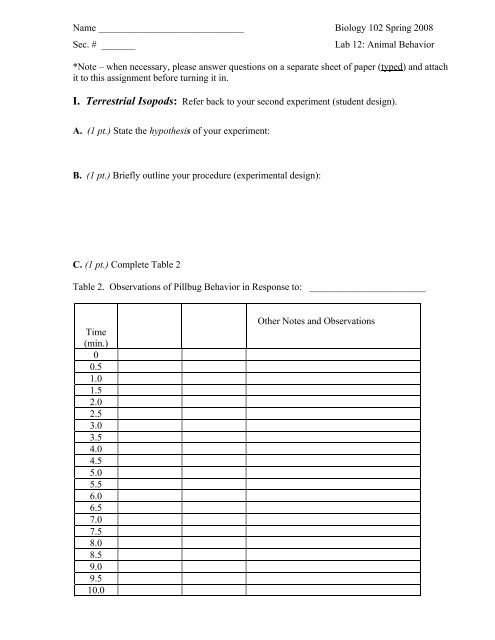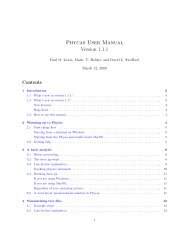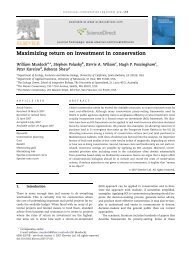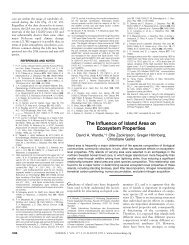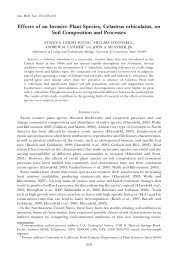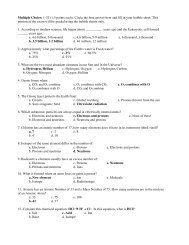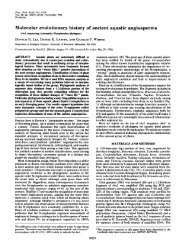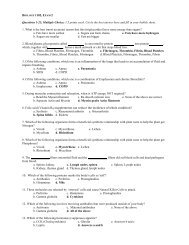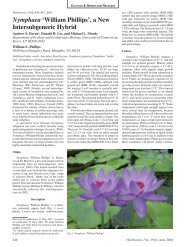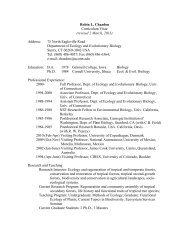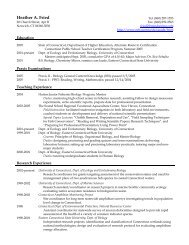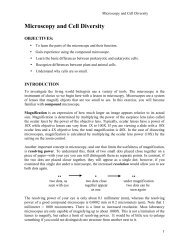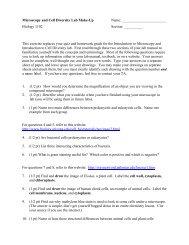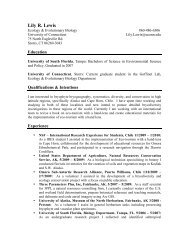Biology 102 Spring 2008 Sec. # ______ Lab 12: Animal Behavior ...
Biology 102 Spring 2008 Sec. # ______ Lab 12: Animal Behavior ...
Biology 102 Spring 2008 Sec. # ______ Lab 12: Animal Behavior ...
Create successful ePaper yourself
Turn your PDF publications into a flip-book with our unique Google optimized e-Paper software.
Name ______________________________ <strong>Biology</strong> <strong>102</strong> <strong>Spring</strong> <strong>2008</strong><strong>Sec</strong>. # _______<strong>Lab</strong> <strong>12</strong>: <strong>Animal</strong> <strong>Behavior</strong>*Note – when necessary, please answer questions on a separate sheet of paper (typed) and attachit to this assignment before turning it in.I. Terrestrial Isopods: Refer back to your second experiment (student design).A. (1 pt.) State the hypothesis of your experiment:B. (1 pt.) Briefly outline your procedure (experimental design):C. (1 pt.) Complete Table 2Table 2. Observations of Pillbug <strong>Behavior</strong> in Response to: ________________________Time(min.)00.51.01.52.02.53.03.54.04.55.05.56.06.57.07.58.08.59.09.510.0Other Notes and Observations
C. Plot the information above on Fig. 2 (2 pts). Use 2 colors for the lines and provide a Keyas to what these represent.Figure 2. (title of graph) ______________________________________For this graph:The (x-axis) independent variable is (1 pt.) ______________________________.The (y-axis) dependent variable is (1 pt.) ________________________________.D. Conclusions (3 pts.): In a few sentences, summarize the data you collected. Were thereany noticeable trends? Did your results verify your hypothesis? Do you believe yourexperimental design was sound, or (if you could) would you go back and do it differently?II. Betta <strong>Behavior</strong>: From the pooled class data that was discussed in lab, address thefollowing questions in your own words and in complete sentences. This should be writtenas a short but cohesive paragraph.a) (0.5 pt.) Which stimuli resulted in the greatest and least (or no) response?b) (0.5 pt.) How important is it that the color of the model (fish or shape) matches that ofthe live fish?c) (0.5 pt.) Did the white paper models cause any responses, and if so what?d) (0.5 pt.) If you did not see a response that you expected for a particular stimulus,explain what factor(s) might account for this.


